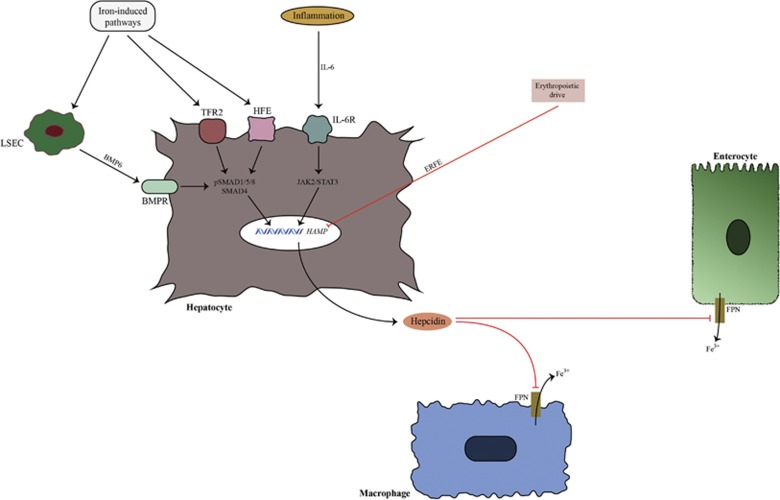Figure 1.
Hepcidin regulation and action in non-cancerous tissue. The major regulators of hepcidin expression in hepatocytes are iron status, inflammatory signals and erythropoietic drive. Iron status is sensed by bone morphogenetic protein 6 (BMP6), transferrin receptor 2 (TFR2) and hemochromatosis protein (HFE). BMP6 is produced by non-parenchymal liver cells (LSEC). BMP6 binds with BMP receptor (BMPR), which activates the SMAD pathway. Phosphorylated SMAD molecules induce HAMP (hepcidin antimicrobial peptide) expression. Inflammation induces hepcidin expression by activating the janus kinase 2-signal transducer and activator of transcription 3 (JAK2/STAT3) pathway. Erythropoietic drive is a negative hepcidin regulator that acts by suppressing hepcidin expression through newly discovered erythroferrone (ERFE). Hepcidin mode of action is realized through induction of ferroportin (FPN) degradation in target cells, which causes sequestration of iron in cells.

